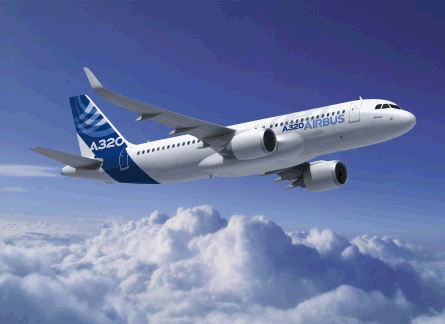IndiGo's engine selection for the 150 A320neos it plans to order could set a precedent for how CFM International and Pratt & Whitney divide market share for the 4,000 aircraft Airbus intends to build.
P&W clearly says that it intends to capture business for its PW1100G geared turbofan on half of those aircraft, while CFM says it is in talks with potential customers for Leap-X-powered A320neos, "and those discussions are going very well".
IndiGo has selected IAE as the engine supplier for the 33 A320s it operates and for the 62 remaining for delivery from a 2005 order with Airbus.
 |
|---|
© Airbus |
The carrier's operation of the IAE V2500 could test a theory offered by consultancy AirInsight that rests on the assumption that operators with CFM56-powered A320s are likely to stick with CFM and its Leap-X for A320neos, and airlines opting for V2500s "will be more inclined to the GTF".
Currently CFM has an advantage over the V2500 based on its 57.7% market share of installed engines on A320 models.
Principals at AirInsight say that the Leap-X, based on traditional architecture, could be the safer choice in the short term for A320neo operators. However, they say that the higher operating temperatures of the engine could raise questions in the long term, although CFM joint venture partner General Electric says the new shapes and air cooling pathways it has developed for the nickel-based, single-crystal alloy blades in the high-pressure turbine will keep temperatures at the same levels as current CFM56 engines.
P&W's use of the largely unproven gear box on a commercial jet engine also could create uncertainty among operators. But Teal Group vice-president Richard Aboulafia says that while initially the Leap-X could be on parity with the PW1100G or have an initial advantage, that is likely to erode as the geared turbofan gains acceptance.
P&W dismisses any perceived disadvantage of the PW1100G engines compared with CFM's Leap-X. By the time the A320neo enters service, P&W estimates the PW1500G designated to power the Bombardier CSeries airliner and Mitsubishi MRJ regional jet will have logged one million hours of revenue service.
But the AirInsight analysts say sceptics are still concerned about the long-term maintenance costs of the geared turbofan, and of P&W's claims of 20% lower maintenance costs than for current engine models.
Significant competition between the two manufacturers to supply powerplants to A320neo operators is likely to remain quiet in the near term as they continue to produce test results for their respective engines and "compete to establish the highest risk-to-reward ratio", says Aboulafia, adding that the earliest he expects an engine order for an A320neo is 2012.
Source: Flight International



















